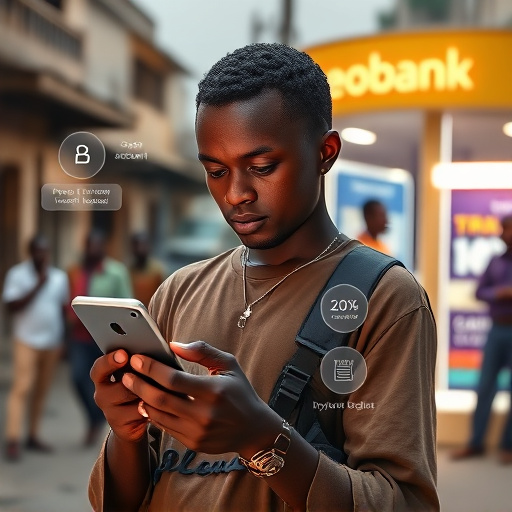Let’s talk about something that’s quietly shaking the table in Africa.
And no, it’s not another dance trend or political drama.
It’s banking.
But not the “sit-at-the-bank-for-4-hours-waiting-to-collect-your-own-money” kind of banking.
I’m talking about Neobanks.
Digital-only banks that live inside your phone—and they’re rewriting the rules.
Remember when banking felt like punishment?
Long queues. Missing forms. Rude customer service.
The moment you step into a branch, it’s like your time stops counting.
That era? It’s dying.
Because a new wave of banks—neobanks—are showing up with one mission:
Make banking simple, accessible, and even… enjoyable.
And it’s not just a tech fad.
This is a movement backed by numbers, real people, and some of the world’s biggest investors.
You see,
Africa’s Digital Banking Revolution Is Already Here
Let’s look at Moniepoint—a neobank based in Nigeria.
These guys process over 800 million transactions every single month.
That’s $17 billion in transaction value.
So, when Google led a $110 million investment round into them in 2024, it wasn’t a gamble—it was a stamp of approval. Proof here – Reuters
And then there’s TymeBank in South Africa.
They just became the first digital bank in Africa to turn a profit.
With over 10 million customers, they’re not just competing—they’re leading. Proof – Financial Times
Even the World Economic Forum gave a nod to OPay, recognizing its role in advancing financial inclusion in Nigeria.
So, Why Are Africans Choosing Neobanks?
Let me paint a quick picture.
You’re a market woman in Aba.
You sell fabric, but traditional banks won’t give you a POS machine unless you have “collateral” or a “registered business.”
But here comes Moniepoint, handing you a POS terminal with zero stress and 24/7 support.
Now multiply that by millions of people across Africa.
People who’ve been ignored, underserved, or straight-up rejected by traditional banks.
Neobanks are giving them a seat at the table.
No paperwork. No branches. No judgment.
Just your phone and access to the financial world.
But It’s Not All Smooth Sailing…
Let’s be frank
Africa still has a few dragons to slay, and some of them include
-
Internet access is patchy.
In countries like South Sudan and Somalia, more than 90% of people are offline. That’s a huge roadblock. -
Some people don’t trust “invisible banks.”
Especially older folks and business owners who want to “see where their money is.” Physical branches still matter to them. -
The regulators?
Let’s just say they’re still figuring things out. For example, TymeBank had to pull out of Egypt due to strict cybersecurity laws. -
And the competition is heating up.
Telecom giants like MTN and Airtel are now getting banking licenses too. So, it’s not just neobank vs traditional banks anymore—it’s a three-way street.
So, What’s the Big Deal?
Here’s what’s exciting:
The total transaction value for neobanks in Africa is projected to hit $12.6 billion in 2023.
And it’s expected to grow 21% every year through 2027. Proof—Traderoot Africa
That means more access.
More innovation.
More competition.
And ultimately? Better banking for the average African.
CONCLUSION
The Future Is Already In Your Pocket
Let me leave you with this:
Africa’s youth is digitally native.
They’re not afraid to try a bank with no building, no suit-wearing manmanager, and hidden fees.
They just want to move money, pay bills, and grow businesses—fast and painlessly.
Neobanks are not “coming.”
They’re here.
And they’re not just disrupting banking.
They’re redefining who gets to belong in the financial system.
So next time you pull out your phone and send money in 5 seconds,
remember: you’re not just using an app…
You’re part of a quiet revolution.
One that’s shaking centuries of old-school banking—and building a new kind of financial future for Africa.


